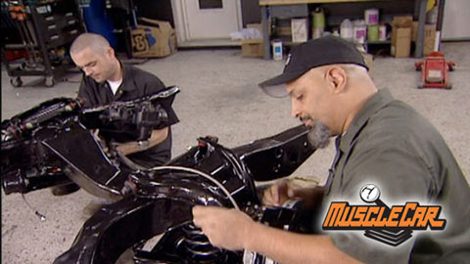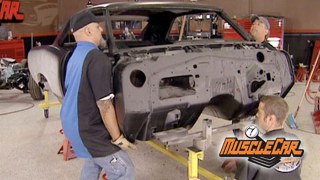More '67 Pontiac LeMans Episodes
MuscleCar Builds
Want more content like this?
Join the PowerNation Email NewsletterParts Used In This Episode
Ames Performance Engineering
Engine Internals
ARP
Acceessory kit, head bolts.<br>
-Two bolt main kit, rocker arm studs.
Auto Body Color & Supply Co.
Black Epoxy primer, ROLOC discs, was remover, maroon general use pan.
Auto Body Color & Supply Co.
Polyurethane and catalysts for frame section and underbody.
Butler Performance
Port and polish heads, machine block, special ordering ross pistons based on specs.
Butler Performance
Ross pistons, rings, and locks.
Comp Cams
Hydraulic roller camshaft and rocker arm setup.
Eagle Specialty Products
-4.25 stroker crank.<br>
-6.800 H-beam.
Edelbrock
-DUAL QUAD INTAKE.<br>
-500 CFM carbs takes two.
Lakewood Industries
Bellwood.
Mallory Performance
Distributor, bronze gear, wire set and E-coil.
McLeod Industries
Hydraulic throw-out bearing assembly.
Milodon
-3/4 inch inlet pickup.<br>
-Stock replacement.
Moser Engineering
3.55 gears, Detroit locker, 1/2 inch studs, Torino housing ends.
Mr. Gasket
Gasket Set.
O'Reilly Auto Parts
Tie rod ends, sleeves, center link, idler arm, pitman arm, ball joints.
Prothane
Body mounts, control arm bushings.
Richmond Gear
Super T-10 4 speed.
Stainless Steel Brakes
-Drum to disc conversion with Force-10 extreme 4 piston & rotors.<br>
-Set up with FORD 9 inch ends. Black calipers, for custom 12 bolt moser rear end.
Zoom Performance
Custom clutch assembly.


































